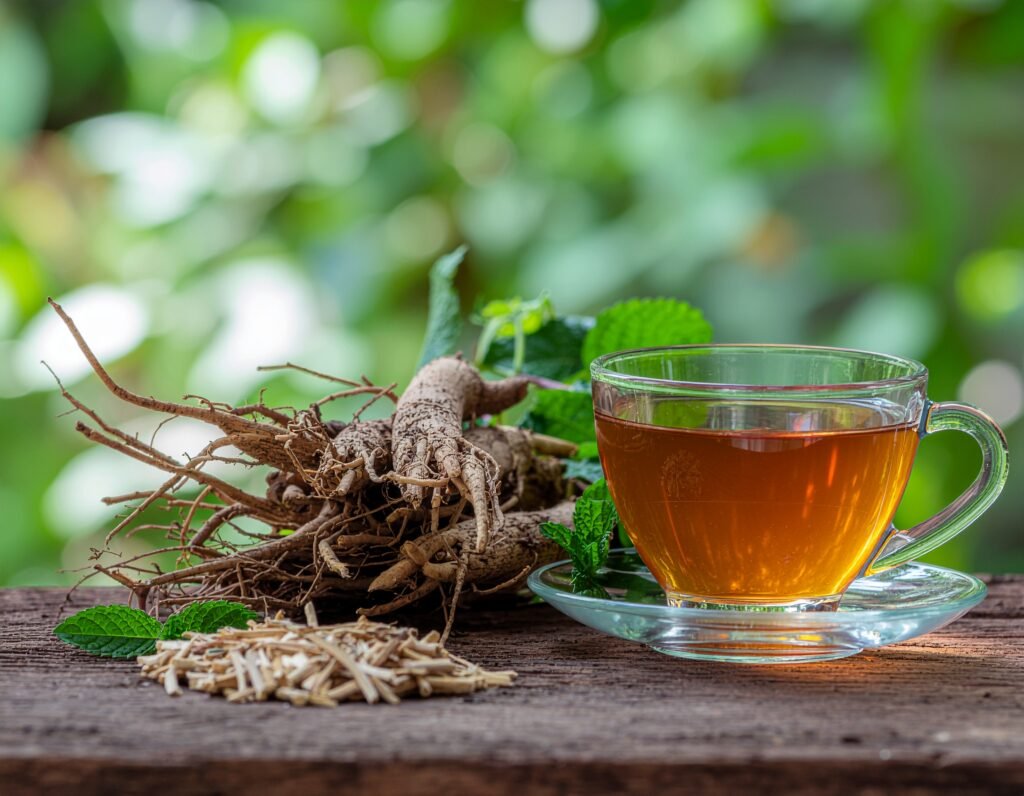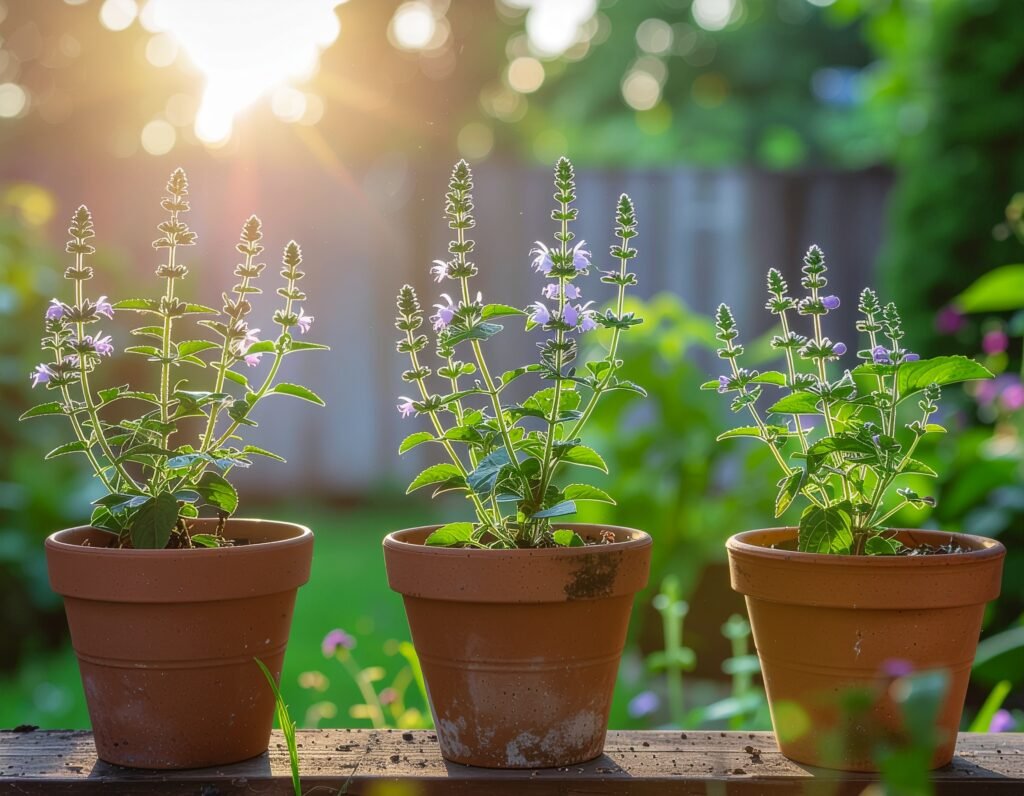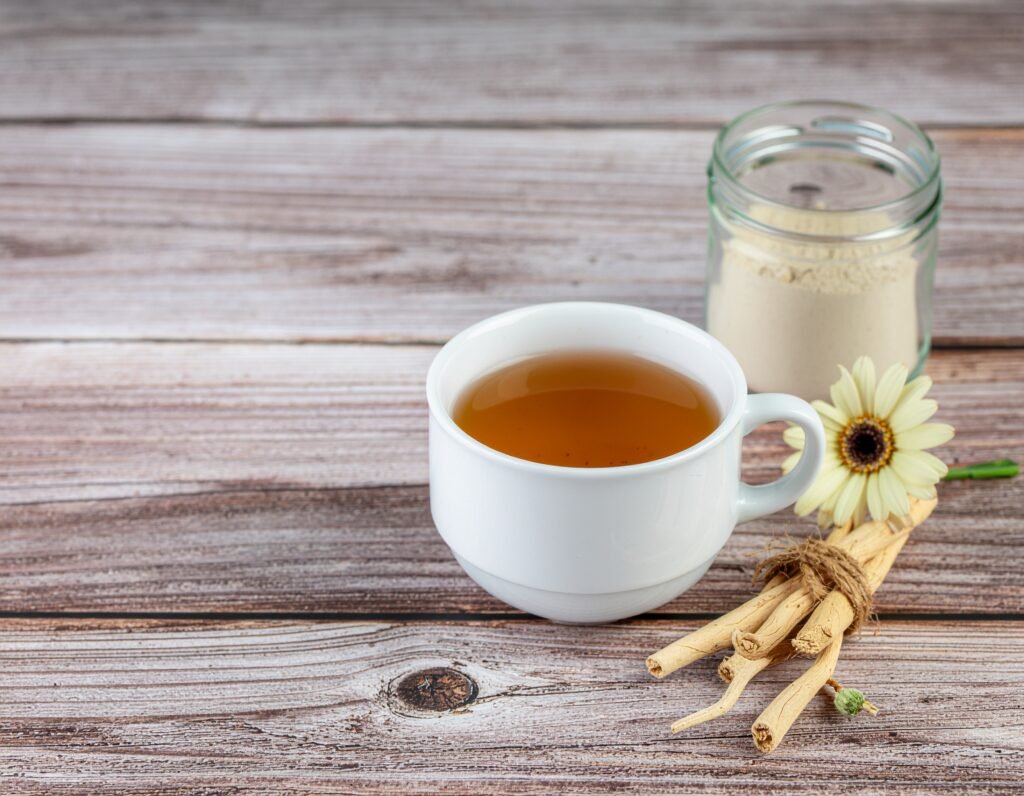Shatavari Root Benefits: Ancient Herb for Natural Hormone Balance & Women’s Health Support
A gentle, time-honored Ayurvedic ally for menstrual comfort, perimenopause and menopause ease, and everyday resilience—plus how to grow, harvest, and use it wisely.

Women’s Metabolism & Hormone Helper
Build a simple, supportive routine with food, tea, and lifestyle cues that complement herbs like shatavari for steadier energy and monthly balance.
Get the helperShatavari (Asparagus racemosus) has been cherished in Ayurveda for centuries as a premier rasayana—a rejuvenating herb especially supportive for women through all life stages. Traditionally used to ease monthly ups and downs, nourish during perimenopause and menopause, and support mood and resilience, shatavari is prized for being gentle, grounding, and versatile. Below you’ll find an easy path to grow it at home, prepare it safely, and add it to simple recipes and routines.
Why shatavari? Benefits & safety
Shatavari’s root contains saponins (often called shatavarins) and other phytonutrients linked to soothing, adaptogenic-like effects. Many users turn to shatavari to help with cycle regularity, dry tissues, occasional hot flashes, and mood steadiness. As with all herbs, context and quality matter—start low, go slow, and pair with sleep, movement, and balanced meals.
NCCIH: Menopause & CAM PubMed overview on ShatavariKew: Asparagus racemosus.Women’s Metabolism and Hormone Helper
Quick swaps and simple tea ideas to support cycle comfort and steady energy—designed to pair with shatavari and food-first strategies.
Send me the guideDid You Know?
In Sanskrit, “Shatavari” is often translated as “she who possesses a hundred [husbands]”—a nod to its long-standing reputation for vitality, moisture balance, and resilience.
Okinawa Flat Belly Tonic: Inspired by Japanese Longevity
Naturally support a healthy metabolism and energy—blend the power of Okinawan herbs into your daily ritual.
Try Okinawa Flat Belly TonicHow to Grow Shatavari at Home
Though less common in Western gardens, shatavari (Asparagus racemosus) can thrive beautifully in containers, raised beds, or warm garden plots with a little patience and the right care. Native to India and other tropical regions, it flourishes in long, warm seasons where its deep, tuberous roots have time to mature. Even in cooler climates, shatavari can be grown successfully indoors or in greenhouses, offering a unique opportunity to cultivate one of Ayurveda’s most revered rejuvenating herbs right at home.
1. Choose the Right Spot
Shatavari loves warmth and gentle sunlight. Select a location that gets at least 6 hours of light daily, but protect young plants from harsh midday heat. If growing indoors, place containers near a sunny window or under grow lights to mimic tropical conditions.
2. Soil Preparation
Use well-draining sandy loam soil rich in compost or organic matter. Good drainage is essential, as the roots will rot in soggy soil. A mix of garden soil, coarse sand, and compost in equal parts works well. Aim for a neutral to slightly acidic pH (6.5–7.5).
3. Planting from Roots or Seeds
Shatavari can be started from crowns (root divisions) or seeds. Crowns are easiest—plant them 2–3 inches deep and 18 inches apart in spring, once frost has passed. If starting from seed, soak seeds in warm water overnight to soften the shell, then sow in small pots or trays. Transplant seedlings once they’re about 6–8 inches tall.
4. Watering & Feeding
Keep soil consistently moist but never waterlogged. Water deeply once or twice a week, allowing the top inch of soil to dry slightly between waterings. Feed every 6–8 weeks with diluted compost tea or organic fertilizer to encourage healthy root growth.
5. Maintenance & Growth
As it grows, shatavari produces fine, feathery foliage and delicate white flowers. The plant may reach up to 4–6 feet tall when mature. Mulch lightly to conserve moisture and protect roots. In cooler regions, bring potted plants indoors before frost or cover outdoor plants with straw for insulation.
6. Harvesting
Patience is key—shatavari roots take 18–24 months to mature. Once the foliage yellows and dies back in late autumn, gently dig around the base to lift the thick, finger-like roots. Clean, slice, and dry them in a shaded area for use in herbal preparations such as powders, tonics, and teas.
7. Replanting for Longevity
Save part of the root system or small crowns for replanting. Shatavari is perennial in warm regions and will return each year, growing stronger and more abundant with time.
Quick Tip: Think of shatavari as a long-term investment in vitality—it grows slowly but rewards patience with deeply nourishing, rejuvenating roots that have supported women’s health for centuries.


Growing basics
Shatavari (Asparagus racemosus), known as the “Queen of Herbs” in Ayurveda, is a rejuvenating root traditionally used to support women’s vitality, fertility, and hormonal balance. This hardy perennial from the asparagus family thrives in warm, tropical, and subtropical climates, making it an excellent choice for home gardeners in regions with mild winters or controlled indoor environments. With the right soil and care, you can grow your own nourishing shatavari roots to use in teas, powders, or tonics for long-term wellness.
Soil & Location:
Shatavari prefers well-draining sandy loam soil rich in organic matter. Choose a sunny to partially shaded location—too much direct heat can stress the young plants. Ideal soil pH is between 6.5 and 7.5. Raised garden beds or large pots work well if your soil is heavy or clay-based.
Planting:
Start from root cuttings or crowns rather than seeds for faster growth. Plant in early spring after the last frost, spacing crowns 1–2 feet apart and covering them with about 2 inches of soil. If planting from seed, soak the seeds overnight and sow them in small pots or seed trays; transplant once the seedlings reach 6–8 inches tall.
Watering & Care:
Keep the soil evenly moist but never soggy. Shatavari is drought-tolerant once established, but consistent watering during the first growing season helps roots develop deeply. Apply a light organic compost or liquid seaweed feed every 6–8 weeks for steady nourishment.
Growth & Maintenance:
The plant produces fine, feathery foliage and small white flowers, followed by reddish-purple berries. It can reach up to 3–6 feet in height. Weed regularly and mulch around the base to retain moisture and protect roots. In cooler climates, grow shatavari in containers so it can be moved indoors during winter.
Harvesting:
Allow the plant to mature for 18–24 months before harvesting roots for medicinal use. Carefully dig around the plant and lift the thick, finger-like tuberous roots. Wash and dry them in a shaded, well-ventilated area before storing or powdering.
Quick Tip: Shatavari thrives in warm, humid conditions—treat it like a tender asparagus plant with a touch of tropical care. Once established, it returns each year with new growth and stronger roots, offering a continual source of nourishment for women’s health and vitality.
- Soil: Loamy, well-drained, enriched with compost; raised beds/large pots work well.
- Light: Bright sun with some afternoon protection in hot climates.
- Water: Moderate; avoid soggy roots. Mulch helps maintain even moisture.
- Time: Allow 18–24+ months for roots to reach harvestable maturity.
- Support: Some varieties may benefit from gentle staking as vines lengthen.
Quick growing tip
Focus on root health: deep containers (or beds), consistent but moderate moisture, and seasonal feeding with compost make the difference.
Harvesting and Preparing Shatavari Roots
Harvesting & Preparing Shatavari Roots
Shatavari’s healing power lies in its thick, tuberous roots—rich in saponins, mucilage, and natural phytoestrogens that nourish the reproductive and endocrine systems. Because the plant builds its strength gradually, the roots are typically harvested after 2–3 years, once they’ve had time to store a full reserve of nutrients and bioactive compounds. Harvesting at the right stage ensures optimal potency for teas, powders, or rejuvenating tonics.
When to Harvest:
Harvest shatavari in late autumn when the foliage begins to yellow and die back. This signals that the plant’s energy has returned to the roots. If you’re growing in containers or raised beds, you can gently lift one section at a time—allowing the rest to continue maturing for the following season.
How to Harvest:
Use a garden fork or trowel to carefully loosen the soil deeply around the root zone. Shatavari roots can grow long and finger-like, so take care not to break them. Lift the root cluster gently from the soil, shake off excess dirt, and rinse thoroughly under cool water. The roots should be firm, beige to light brown, and slightly sweet in aroma.
Preparing the Roots:
After cleaning, slice the roots into thin, even pieces to speed up drying. You can air-dry them in a warm, shaded, well-ventilated space for 7–10 days, or use a dehydrator on low heat (95–115°F / 35–46°C) for faster results. Once completely dry and brittle, store in airtight glass jars away from direct light. Properly dried roots can last up to a year while retaining their potency.
How to Use:
Dried shatavari roots can be ground into powder and mixed into warm milk, smoothies, or herbal blends. Fresh roots can be simmered gently in water or milk for decoctions—traditional Ayurvedic tonics that soothe the body and replenish vitality. Combine with ashwagandha or maca for energy and hormonal balance, or with cardamom for digestive comfort.
Quick Tip: Always leave part of the root system intact when harvesting from established plants. This allows shatavari to regrow each season—ensuring a sustainable, self-renewing source of this deeply restorative herb for years to come.
Java Brain: Quercetin, Ginkgo & Nature’s Nootropics
- Includes natural neuro‑supportive botanicals like quercetin & Ginkgo biloba
- Zero synthetic stimulants—just plant-based mental support
- Designed to synergize with your day, not take it over


Basic shatavari tea (decoction)
Basic Shatavari Tea (Decoction)
Ingredients: 1–2 teaspoons dried, sliced Shatavari root per cup of water.
How to Make: In a small pot, combine the root and water. Simmer gently for 15–20 minutes, allowing the water to reduce slightly.
To Serve: Strain and enjoy warm. Sweeten lightly with honey or jaggery (optional).
When to Drink: Sip with meals for digestive nourishment or before bed to soothe and restore the body.
How to Use Shatavari for Hormone Balance
How to Use Shatavari for Hormone Balance
Shatavari (Asparagus racemosus) is one of Ayurveda’s most trusted tonics for women’s hormonal harmony, offering gentle support through every stage of life. Its nourishing roots help regulate estrogen levels, strengthen reproductive tissues, and promote emotional and physical steadiness during times of change—whether it’s monthly cycles, perimenopause, or post-menopause. Because shatavari works as a rejuvenating adaptogen, its effects build gradually over time, restoring balance without overstimulating the system.
How It Supports Hormone Balance:
Shatavari contains natural phytoestrogens (plant compounds that gently mimic estrogen’s activity) along with saponins and antioxidants that help the body adapt to hormonal shifts. It nourishes the pituitary and adrenal glands—key regulators of hormone communication—and replenishes moisture in tissues often depleted by stress or hormonal fluctuations. The result is improved mood, cycle regularity, and overall vitality.
Common Uses & Benefits:
- Monthly Comfort: Helps ease menstrual discomfort, bloating, and fatigue by promoting smoother hormonal rhythms and uterine relaxation.
- Perimenopausal Steadiness: Supports emotional balance, reduces hot flashes, and stabilizes energy as hormone levels fluctuate.
- Skin & Tissue Hydration: Restores internal moisture, promoting healthy skin, digestion, and feminine tissue tone.
- Emotional Calm: As an adaptogen, shatavari reduces stress-related hormonal disruption and enhances resilience during busy or demanding seasons.
How to Take Shatavari:
Shatavari can be enjoyed in several simple, everyday forms depending on your preference and lifestyle:
- Tea or Decoction: Simmer 1–2 teaspoons of dried shatavari root in 2 cups of water or milk for 15–20 minutes. Strain and drink warm once daily. This traditional Ayurvedic preparation helps calm the nervous system and support reproductive health.
- Powder: Mix ½–1 teaspoon of shatavari powder into warm milk, non-dairy milk, or smoothies. Add a pinch of cardamom, cinnamon, or honey to enhance flavor and absorption. Ideal for daily hormone and adrenal support.
- Capsules: Take 400–600 mg daily, preferably in the morning or evening with food. Capsules are a convenient option for consistent, long-term use.
How Much to Take:
Start small—use ¼ to ½ teaspoon daily (or one capsule) and increase gradually over several weeks. Shatavari’s effects are cumulative, and gentle consistency is more effective than high doses. Most women notice improvements in mood, energy, and menstrual comfort after 4–8 weeks of daily use.
Combining with Other Herbs:
For enhanced hormone harmony, combine shatavari with ashwagandha (for adrenal and stress balance), maca (for energy and libido), or red raspberry leaf (for uterine tone). These blends work synergistically to restore full-spectrum hormonal and emotional equilibrium.
Quick Tip: Because shatavari deeply nourishes and moistens tissues, it’s especially helpful for women who feel “burned out,” depleted, or dry—physically or emotionally. Use it consistently, paired with a calm routine and whole-food diet, for lasting vitality and feminine balance.


Active compound spotlight
Shatavarins (root saponins) are often cited for shatavari’s balancing properties. For a general science overview, see Mount Sinai: Shatavari and broader herb-safety context via NIH ODS.
This herbal recipe is shared for educational purposes only, based on traditional use and available sources. It is not medical advice. Please consult your healthcare provider before use, especially if pregnant, nursing, or on medication.
Sugar Defender: Guarana, Gymnema & Botanicals
- Formulated with **Maca Root, Gymnema, Berberine, African Mango**, Eleuthero, Guarana & more
- No synthetic fillers—pure plant extracts targeting metabolic resilience
- Designed to work in harmony with your body’s natural systems
Pelvic Floor Daily 5-Minute Plan
Short, gentle movements to pair with shatavari tea time—supports posture, confidence, and core stability.
Get the 5-minute plan